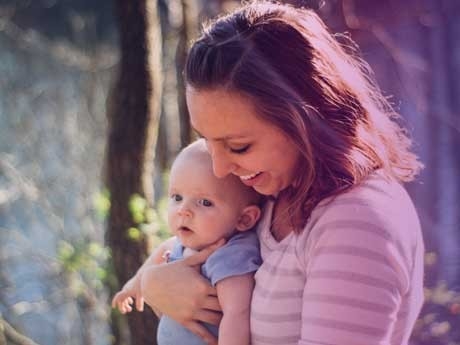Get moving: physio tips for post-natal and women’s health
26 June 2019
Today’s physio tips focus is exercise and women’s health. Pregnancy puts a huge stress on women’s bodies. Women’s health is a key area of practice for physio Rebecca Dodson. She gives her thoughts on how women can look after themselves physically after giving birth… and what women with older children need to be aware of when they’re exercising.
If you’re a new mother get a good set-up for feeding your baby…
When you feed your baby, you’ll find yourself sitting for hours at a time. If you haven’t got a good position – where your back is supported, your feet are flat on the floor (or on a small foot stool) so that your knees are at hip level – it can really take a toll on your neck, back and wrists. Using a feeding pillow will also help lift the baby to a better height for breast feeding and take some of the strain off your arms and neck.

And prioritise your own recovery…
Pregnancy and birth are a massive physical feat. I know that sometimes new mums can feel guilty about resting. Please don’t! Rest, recovery and rehabilitation are essential.
If you can, see a women’s health physio. They’ll asses your recovery and put you on an appropriate path for rehabilitation and your return to exercise. Every pregnancy is different, every birth is different, so every women’s recovery is different too. Don’t compare yourself with others! It’s crucial to return to exercise safely and make sure you’re doing the best for your body in the long term.
Be aware that pelvic floor problems can present in later life…
Pregnancy and childbirth are the biggest contributing factors to pelvic floor dysfunction in women. One in three women who have had a baby will suffer urinary incontinence and nearly as many will develop a pelvic organ prolapse. Sometimes these things don’t present immediately. In fact, it’s quite common for women to start noticing symptoms when they begin menopause. The good news is it’s never too late to strengthen your pelvic floor and other core muscles!
Any woman who’s had a baby should be mindful of loading on the pelvic floor during exercise…
Lifting weights, jumping and skipping can put huge force on the pelvic floor. Sometimes, even small increases in abdominal pressure, or just long periods standing, will cause pelvic floor symptoms.
Learning how to correctly activate and contract your pelvic floor is essential…
It’s essential for good core muscle function, for reducing the risk of developing incontinence or a prolapse and for reducing the actual symptoms themselves. We also know that around 50% of women are doing pelvic floor contractions incorrectly. So even if you think you know how, if you’re having problems with incontinence or have prolapse symptoms, please see a women’s health physio. They’ll be able to make sure you’ve got it right.
Increased BMI is another significant contributing factor for incontinence and prolapse…
But of course exercise (which along with healthy eating is the most effective way to reduce BMI) can seem impossible for those with incontinence and prolapse symptoms. Pelvic floor physiotherapy can offer modifications for exercises so that symptoms aren’t triggered. This can help women to be active and gain the benefits reduced BMI can offer.
It’s so important that women know that they can get help to treat their symptoms…
And that, most of this time, this doesn’t need to be surgery. Pelvic floor physiotherapy is extremely effective in most cases.

About Rebecca Dodson
Rebecca has trained and worked as a musculoskeletal and sports physio for 20 years. Over the past 10 years her passion for women’s health led her to specialise in pelvic floor physiotherapy, pre- and post-natal exercise, clinical pilates and acupuncture. She is a leader in women’s health and in 2015 established Leto Women’s Health with fellow physiotherapist and women’s health leader Stacey Law.
The information in this article has been compiled from various sources and is intended to be factual information only. Full details of policy terms and conditions are available from Asteron Life Limited or your financial adviser. For advice on product suitability, please contact your financial adviser. While we take reasonable steps to ensure that the information contained in this article is accurate and up-to-date, it is subject to change without notice. Asteron Life Limited and its related companies does/do not accept any responsibility or liability in connection with your use of or reliance on this article.
Keep reading

Insurance
What is Life Insurance?
You can't predict the future, but you can help protect yourself against it. Life Insurance can provide a lump sum of money if you die or become terminally ill. It is designed to help your family pay costs that you would have helped with if you were still alive.


